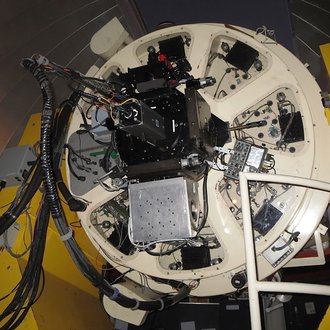PEPSI@VATT
The most powerful spectrograph of the world - PEPSI - is also attached to the most powerful telescope in the world - the LBT. But there are times of course, where other instruments are used with the LBT, a time which does not have to be wasted. This brought up the idea to build a fiber link from the Vatican Advanced Technology Telescope (VATT) to PEPSI, allowing otherwise idle times to be used.
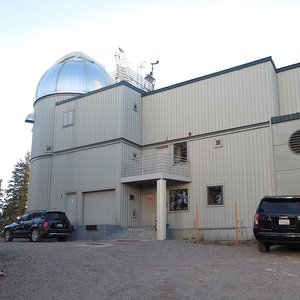
The VATT dome on Mt. Graham, building.
Credit: AIP
Digging the new fiber train.
Credit: AIP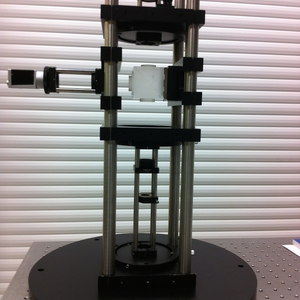
The adapter used for commissioning the VATT at the test bench.
Credit: AIPLight-collecting power of the VATT is of course limited compared to the LBT (light collecting area of the VATT main mirror is just 2.4% of the LBT's combined mirrors), and the fiber length of roughly 400 m attenuates the light, more in the blue, even further, but for brighter stars, still enough light arrives at PEPSI.
Operating of PEPSI@VATT should be done in an automated, preferably robotic way. In Aug. 2014, it could be shown that acquisition and guiding (AG) using back-reflected light from a makeshift telescope adapter can be done in an automated way. The AG principle is similar enough to guiding the LBT, that a seamless integration of the VATT guiding system in the PEPSI control GUI could be realized ad-hoc.
In fall 2014, first light on PEPSI with the VATT was achieved.
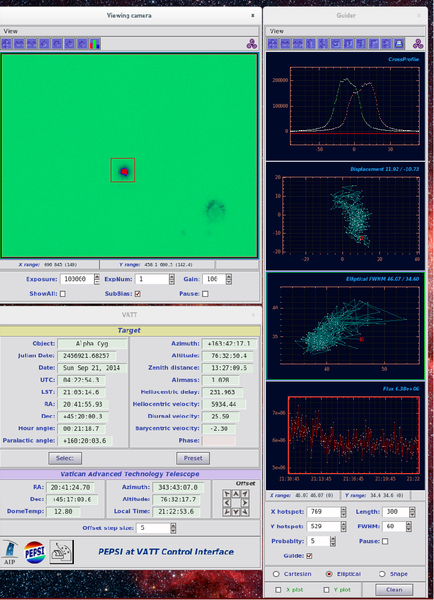
Graphical user interface for the automated controlling.
Credit: AIP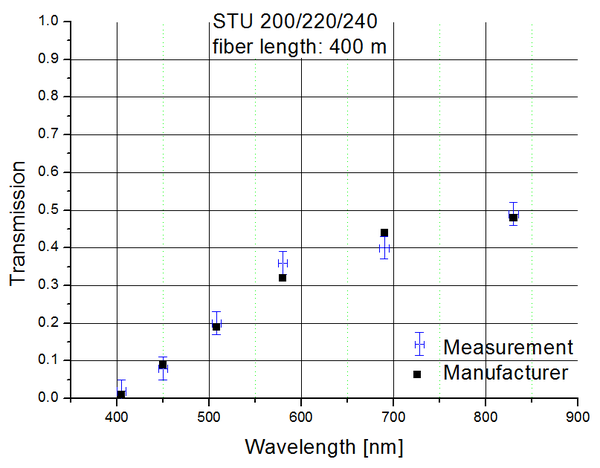
Transmission of VATT fiber vs. λ
Credit: AIP